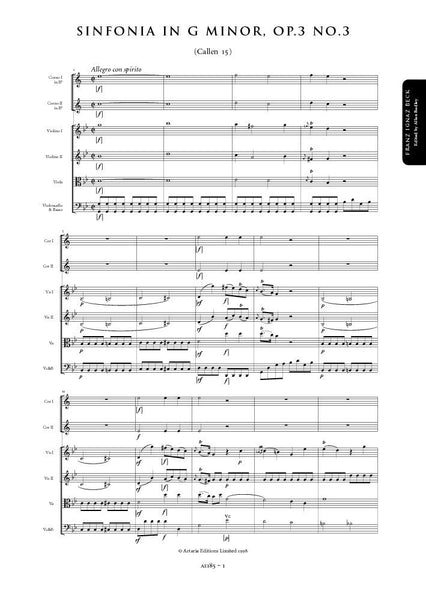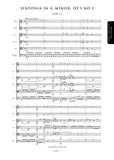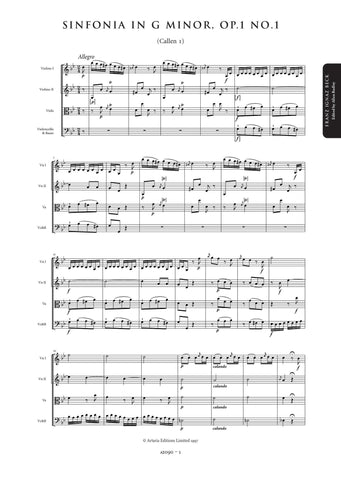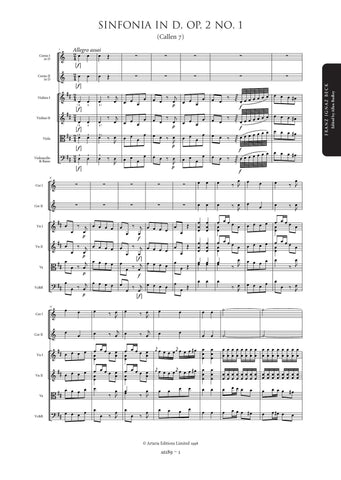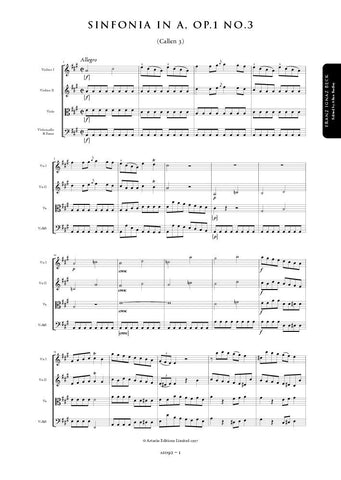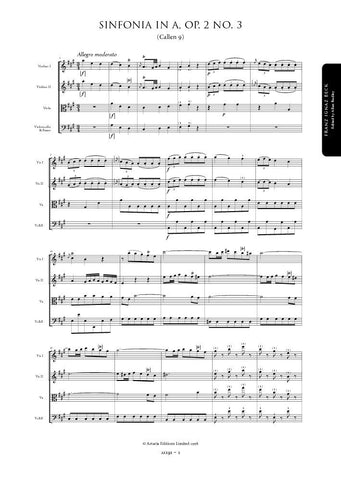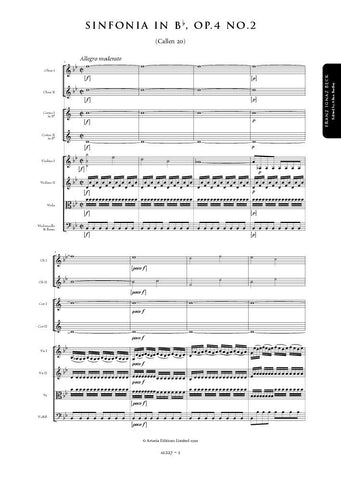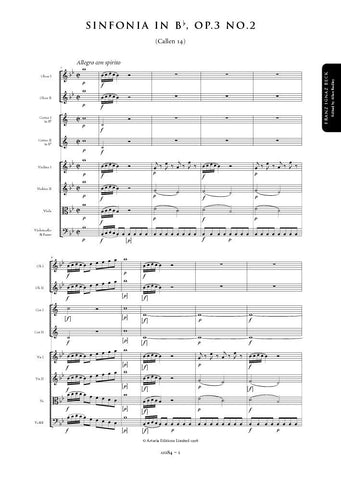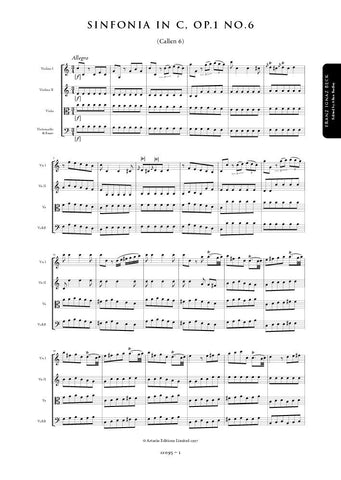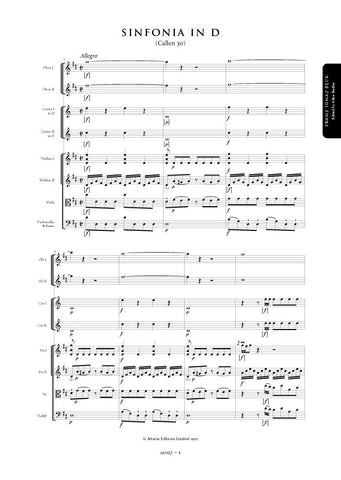Beck, Franz: Symphony in G minor, Op. 3, No. 3 (Callen 15) (AE185) – sheet music
Previous Product
Description |
Beck, Franz (1734-1809)
|
||||||||||||||||||
Audio sample |
|||||||||||||||||||
Details |
The six Op.3 symphonies, issued by Venier in 1762, are broader in scope and considerably more advanced than the symphonies of Opp.1 & 2. Although they still share many stylistic features with the symphonies of Stamitz and Richter, a new and distinctive voice can be heard in these works particularly in the use of exposed writing for the winds in several of the works. Only three of the set are scored for oboes, horns and strings; two are scored for a pair of horns and strings, a combination Beck clearly favoured, and one, Op.3 No.5, for strings only. Additional bassoon, trumpet and timpani parts for Op.3 No.4 (Callen 16) are preserved in the archiepiscopal library at Kromeriz but these are almost certainly spurious as is the timpani part for Op.3 No.6 in the Basel University library. The title page of Venier's print reads 'SEI SINFONIE / A PI STROMENTI / Composte / Dal Sigr. FRANCESCO BECK / Virtuoso di Camera di Sua / A. S. L'ELECTOR PALATINO, / & Actualmente Primo Violino / d'ell Concerto di Marsilia. /OPERA TERZA. /...Chez Mr. Venier...' This edition is based on a copy of the Venier print now preserved in the Bodleian Library, Oxford. The only major departure from the Venier text is the omission of the basso continuo figuring on the grounds that it is more likely to be the work a publisher's assistant than the composer himself and is rendered largely superfluous by the publication of the work in full score. The wind 'cue' lines in the string parts have also been omitted for obvious reasons, otherwise, in the absence of both the autograph score and an authentic set of parts, the edition presents as faithfully as possible the intentions of the composer as transmitted in the Venier print. The style and notation of articulation and dynamic markings have been standardised throughout, and, where missing, markings have been reconstructed from parallel passages. These are indicated by the use of dotted slurs or brackets where appropriate. Like most eighteenth-century sources, the Venier print is inconsistent in its notation of appoggiature; these too have been standardised to minimise confusion. Obvious wrong notes have been corrected without comment; editorial emendations with no authority from the source are placed within brackets. Allan Badley |




